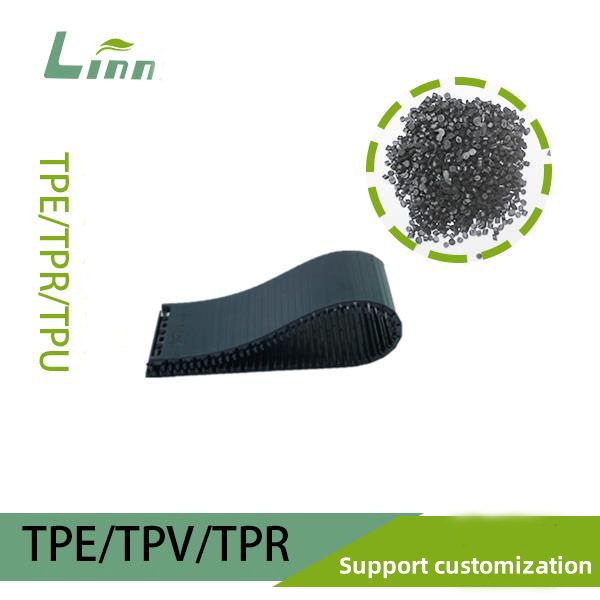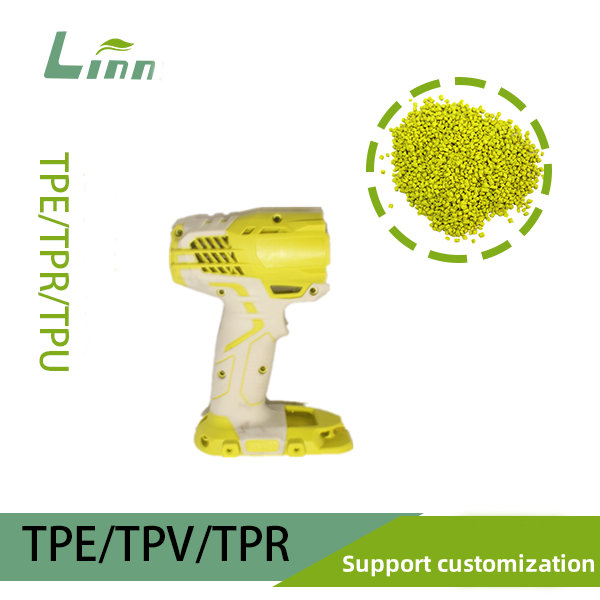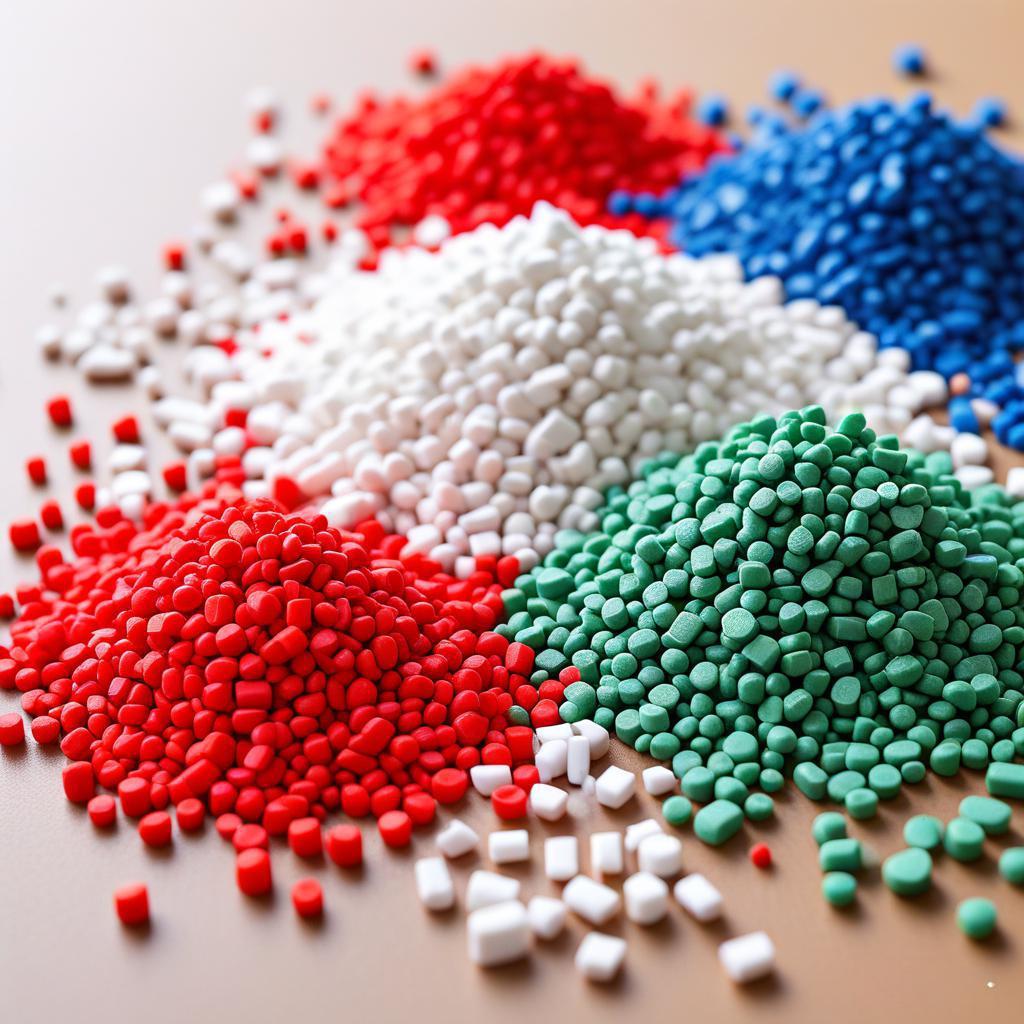1. Understanding the Structure of High-Polymer TPE
To understand why higher temperatures are required, we must first understand what high-polymer TPE means. TPE is not a single polymer but a family of materials composed of two phases: a soft elastomeric phase and a hard thermoplastic phase. In high-polymer or high-molecular-weight TPE, the polymer chains are longer and more entangled, resulting in increased viscosity and melt resistance.
The primary categories of TPE include:
TPE-S (Styrenic block copolymers)
TPE-O (Olefinic blends)
TPE-U (Thermoplastic polyurethanes)
TPE-V (Vulcanised blends)
TPE-A (Amides)
TPE-E (Copolyester elastomers)
Among these, TPE-U, TPE-A, and TPE-E typically have higher molecular weights and stronger intermolecular forces, which means they demand higher processing temperatures for adequate melt flow and fusion.

2. Why High Temperature Is Necessary in TPE Processing
The need for elevated temperatures stems from molecular dynamics and phase structure. When processing high-polymer TPE, heat is not merely used to melt the material but to mobilise long-chain molecules and activate the hard-segment domains that serve as physical cross-links.
| Reason | Description | Effect of Insufficient Temperature | Required Action |
|---|---|---|---|
| High molecular entanglement | Long polymer chains create strong internal friction. | Poor flow, incomplete filling, weld lines. | Increase barrel and mould temperature to reduce viscosity. |
| Strong inter-segment bonding | Hard and soft phases require energy to separate temporarily during flow. | Weak bonding between layers, brittle surface. | Maintain melt temperature above softening point of hard phase. |
| High crystallinity | Semi-crystalline regions resist deformation. | Rough surface, poor fusion. | Raise processing temperature until crystalline domains soften. |
| Rheological activation | TPE viscosity decreases exponentially with temperature. | Short shots, inconsistent part weight. | Optimise heating profile for stable flow. |
Therefore, temperature in TPE processing is not just about melting—it is about achieving molecular mobility and interphase fusion. Without sufficient temperature, the material cannot fully develop its elasticity or structural integrity.
3. The Role of Molecular Mobility and Segment Activation
TPE behaves differently from conventional plastics. In polypropylene or polyethylene, once the crystalline phase melts, the material flows readily. In contrast, TPE has a dual-phase structure. The soft phase provides elasticity, while the hard phase gives strength. During processing, the hard phase must be heated enough to allow chain slippage and reorientation, while the soft phase maintains flexibility.
At low temperature:
Hard domains remain rigid.
Chain mobility is limited.
The melt behaves like a semi-solid paste, leading to incomplete filling.
At optimal temperature:
The hard segments soften just enough to allow flow.
The polymer chains disentangle and reorient.
The melt achieves proper fusion and surface gloss.
At excessive temperature:
Chain scission or oxidation occurs.
Volatile compounds release, causing bubbles or yellowing.
Thus, maintaining an adequate high temperature ensures proper segment activation and chain entanglement recovery during cooling, leading to improved tensile strength and elasticity.
4. Rheology and Melt Flow of TPE at Elevated Temperature
Rheologically, TPE exhibits non-Newtonian shear-thinning behaviour. Its viscosity decreases as shear rate and temperature increase. The viscosity equation for polymer melts approximately follows the Arrhenius relationship:
η = A * exp(Ea / RT)
Where:
η = viscosity
A = material constant
Ea = activation energy
R = gas constant
T = absolute temperature
From this relation, even a small increase in processing temperature results in an exponential drop in viscosity. For high-molecular-weight TPE, this is critical because the melt viscosity at low temperature is extremely high. Without sufficient heat input, the melt cannot fill narrow or complex moulds, leading to incomplete parts.
In summary:
Higher molecular weight → higher melt viscosity.
Higher melt viscosity → requires higher temperature for adequate flow.
Proper flow → ensures consistent mechanical performance.
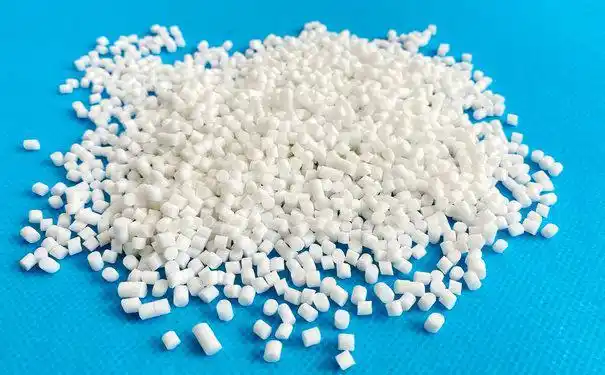
5. Effect of Insufficient Temperature on TPE Properties
Operating below the optimal temperature window is one of the most common causes of poor TPE part quality. The following table summarises the impact of low temperature on different properties:
| Property | Low Temperature Effect | Mechanism | Consequence |
|---|---|---|---|
| Surface quality | Dull finish, flow marks, weld lines. | Poor melt fusion, incomplete filling. | Aesthetic and functional defects. |
| Elastic recovery | Reduced rebound resilience. | Incomplete chain orientation recovery. | Decreased elasticity and fatigue life. |
| Tensile strength | Weak inter-phase bonding. | Hard segment not activated for flow. | Brittle or easily cracked parts. |
| Dimensional stability | Uneven shrinkage. | Poor molecular packing. | Warpage or distortion after cooling. |
Therefore, maintaining proper high temperature is essential to avoid structural weaknesses and to achieve consistent physical properties.
6. Balancing Temperature with Shear and Cooling
While high temperature is necessary, excessive heat or shear can also degrade the polymer. The art of TPE injection moulding lies in finding a balance between temperature, shear, and cooling.
Temperature: Provides energy for flow and fusion.
Shear: Reduces viscosity mechanically through orientation.
Cooling: Locks the structure into place without residual stress.
If the temperature is too low, the polymer requires excessive shear to flow, which can cause mechanical degradation. If it is too high, oxidation and chain scission may occur.
To optimise this balance:
Gradually increase barrel temperature across zones (front to back).
Maintain uniform mould temperature to avoid uneven cooling.
Control screw speed and back pressure to prevent overheating.
7. Temperature Profiles for Common High-Polymer TPEs
Different TPE families have different optimal temperature ranges. The following table provides a general guide:
| TPE Type | Typical Processing Temperature (°C) | Notes | Melt Behaviour |
|---|---|---|---|
| TPE-S | 180–230 | Easy to process, lower viscosity. | Flows well, good for consumer goods. |
| TPE-O | 190–240 | Semi-crystalline, moderate flow. | Requires stable temperature control. |
| TPE-U | 200–250 | Sensitive to moisture, high strength. | Needs precise drying and high temperature. |
| TPE-V | 210–260 | Contains vulcanised phase. | Requires higher temperature for softening. |
| TPE-A | 230–270 | High hardness and rigidity. | High temperature essential for chain mobility. |
| TPE-E | 220–270 | Strong crystallinity. | Needs high heat for flow and bonding. |
As molecular weight increases or as crystalline content rises, the necessary processing temperature also increases. The processor must confirm exact settings from supplier data sheets but also fine-tune through experimental verification.
8. Thermal Stability and Degradation Limits
While high temperature is necessary, it should never exceed the thermal degradation threshold of the polymer. Degradation typically occurs via oxidation, chain scission, or depolymerisation.
Signs of thermal degradation include:
Colour change (yellowing or browning)
Odour of burnt plastic
Increased brittleness
Surface bubbling or streaking
To mitigate degradation:
Use proper drying to remove moisture before processing.
Avoid long residence times in the barrel.
Minimise shear heating by moderating screw speed.
Employ stabilisers or antioxidants where necessary.
In short, temperature should be high enough for flow but low enough to prevent decomposition.

9. Influence of Mould Temperature
Mould temperature plays a crucial role in achieving surface quality and mechanical integrity. For high-polymer TPEs, a warm mould (often 40–80 °C) promotes better surface replication and reduces internal stress. If the mould is too cold, the melt solidifies prematurely, trapping residual stress and limiting chain relaxation.
A properly heated mould ensures:
Complete filling and smooth surface finish.
Improved weld-line strength.
Reduced warpage and dimensional variation.
Enhanced adhesion for over-moulding applications.
In contrast, low mould temperature combined with high melt viscosity causes immediate surface freezing, which traps flow lines and incomplete fusion, leading to brittle or visually defective parts.
10. Comparative Example: Low vs High Processing Temperature
A simple comparison illustrates how temperature influences performance:
| Condition | Melt Temp (°C) | Surface Quality | Tensile Strength (MPa) | Elongation at Break (%) |
|---|---|---|---|---|
| Low Temp | 190 | Rough, visible weld lines | 7.5 | 240 |
| Optimal Temp | 225 | Smooth, glossy | 10.2 | 460 |
| Excessive Temp | 260 | Slight yellowing | 9.8 | 410 |
As the table shows, moderate high temperature maximises strength and elasticity, while both low and excessive temperatures compromise performance.
11. The Relationship Between Temperature and Crystallinity
Crystallinity in TPE determines stiffness, shrinkage, and elasticity. During processing, temperature influences the degree of crystallisation. Too low a temperature leads to incomplete melting of crystals, causing defects. Too high a temperature may over-soften the hard phase, resulting in dimensional instability.
Maintaining the correct temperature ensures controlled recrystallisation upon cooling, which stabilises the part dimensionally and enhances its elastic recovery.
12. Common Mistakes When Processing High-Polymer TPE
Professionals often encounter challenges when switching from other materials to high-polymer TPE. Typical mistakes include:
Applying low melt temperatures suitable for standard plastics.
Ignoring the need for mould temperature control.
Neglecting moisture drying before processing.
Assuming higher temperature always improves flow.
Over-shearing the material to compensate for poor heating.
Each of these errors can reduce molecular weight or prevent proper fusion, resulting in brittle parts or surface defects.
13. Optimising Process Parameters
To achieve optimal performance, engineers should follow these principles:
Material Handling
Pre-dry TPE at recommended temperature (typically 80–100 °C).
Avoid contamination or prolonged storage under humid conditions.
Barrel Settings
Establish a gradual temperature profile (rear to nozzle).
Prevent overheating near the nozzle by precise zone control.
Injection Settings
Use sufficient injection speed to ensure full cavity filling.
Adjust holding pressure to eliminate voids.
Optimise cooling time to relieve stress gradually.
Quality Verification
Inspect parts for gloss, flow marks, and mechanical consistency.
Test tensile and elongation properties regularly.
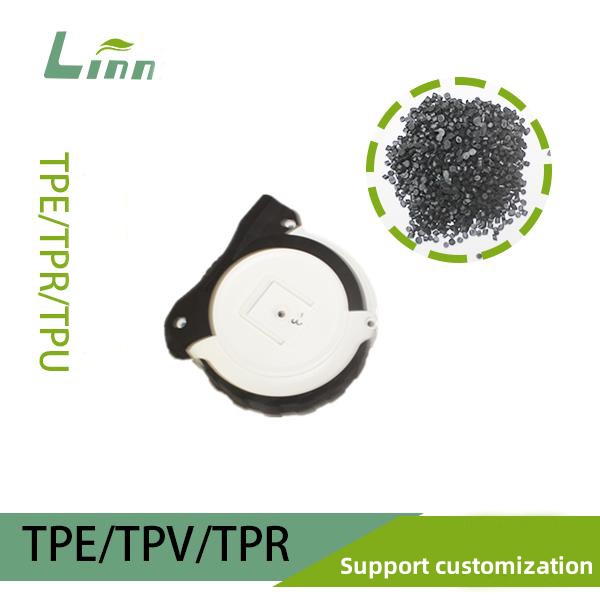
14. Environmental and Post-Mould Effects
Even after successful moulding, environmental factors such as humidity, heat, and UV exposure can influence TPE performance. Improper cooling or storage may also induce internal stresses that evolve into brittleness over time. Allowing parts to anneal—rest at controlled temperature for several hours—can help molecular chains stabilise, enhancing flexibility and strength.
15. Practical Case Study
A manufacturer producing automotive seals experienced poor flow and brittle parts. The melt temperature was set at 200 °C for a high-hardness TPE-E material. After analysis, it was found that the hard polyester segments required at least 240 °C for complete melting. Once the temperature was increased and the mould temperature raised from 30 °C to 60 °C, the following improvements were recorded:
Surface gloss improved significantly.
Tensile strength increased by 35 %.
Elongation at break doubled.
Scrap rate reduced from 12 % to below 2 %.
This demonstrates that processing temperature directly correlates with product integrity and performance.
16. Best Practices Summary
Maintain adequate melt temperature for complete molecular activation.
Control mould temperature to improve surface finish and reduce stress.
Avoid overheating by limiting residence time and shear rate.
Pre-dry material to prevent hydrolysis and voids.
Monitor viscosity and flow during start-up to ensure consistency.
Implement quality checks for every batch to detect variation early.
17. Key Takeaways
High-polymer TPEs require higher processing temperatures due to strong intermolecular bonding and high melt viscosity.
Proper heating ensures adequate molecular mobility, fusion, and surface quality.
Excessive temperature can lead to degradation, so control is essential.
Mould temperature and cooling rate are equally important in preventing brittleness and warpage.
Consistent temperature management enhances mechanical strength, elasticity, and long-term stability.

18. Frequently Asked Questions
Q1: Why does my TPE not flow well even at moderate temperature?
Because high-molecular-weight chains require higher energy to move. Increase temperature gradually to improve flow and reduce pressure load.
Q2: Can higher temperature always solve flow problems?
Not always. Excessive heat can cause degradation. It is better to balance temperature with injection speed and mould design.
Q3: How can I tell if the temperature is too low?
Look for signs like dull surface, short shots, poor weld-line strength, and low elongation at break.
Q4: What happens if I process TPE too hot?
You may notice yellowing, burning odour, or surface bubbles. Reduce temperature or residence time immediately.
Q5: Does higher temperature affect bonding in over-moulding?
Yes. Higher melt temperature improves interfacial bonding with the substrate by promoting wetting and adhesion.
Q6: Should I increase mould temperature along with melt temperature?
Yes. Balanced high melt and mould temperature ensure uniform filling and minimise internal stress.
Q7: Is drying important even if temperature is high?
Absolutely. Moisture leads to hydrolysis and degradation regardless of melt temperature.
Q8: What are typical temperature zones for a TPE-U injection barrel?
Generally 190–230–240–250 °C from rear to nozzle, depending on hardness and grade.
Conclusion
High-polymer TPE requires high processing temperature because of its strong intermolecular bonding, long-chain structure, and dual-phase morphology. Adequate heat enables molecular activation, reduces viscosity, and ensures complete melt fusion, resulting in superior elasticity, toughness, and dimensional accuracy. However, the challenge lies in maintaining precise thermal control to avoid degradation. By understanding the molecular principles and implementing disciplined process management, manufacturers can achieve stable, high-quality, and durable TPE products consistently. In mastering temperature control, one masters the essence of TPE processing.

